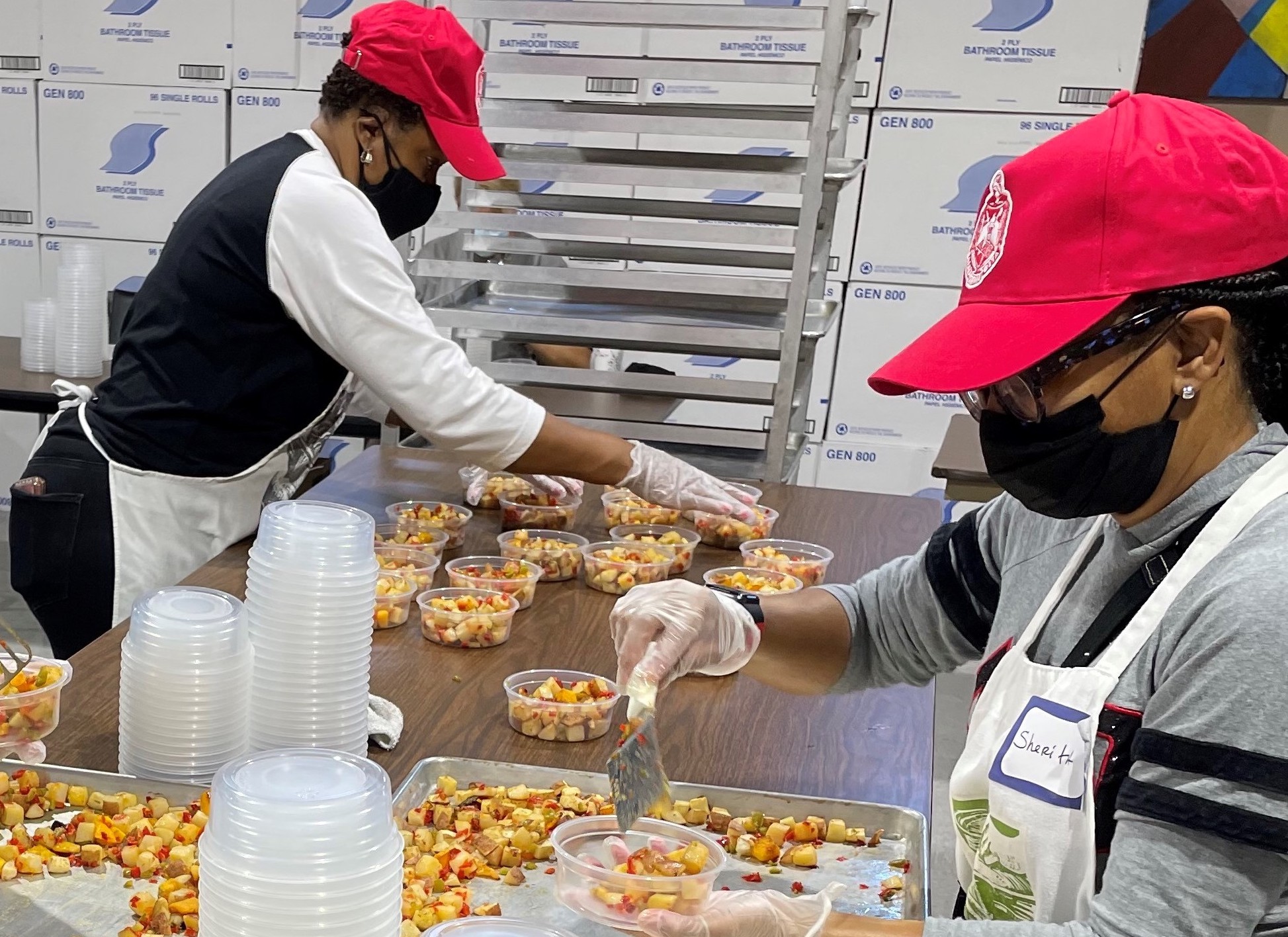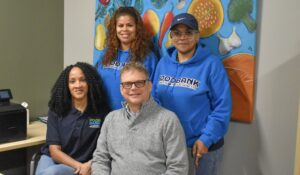The charitable food system may be a risky incubator for diabetes intervention, but hunger relief organizations are experimenting anyway. And they are seeing encouraging results.
Despite challenges, hunger-relief organizations are continuing to find novel and creative ways to address diabetes, a diet-related disease that afflicts about 10% of the U.S. population. Solutions include targeting specific populations like veterans and children, as well as conducting in-depth research into the impact of healthful meals on medical costs and health outcomes.
Food nonprofits are well-positioned to address diabetes because the disease disproportionately affects low-income people who are food insecure. While their progress has been slow going, the ongoing effort is worthwhile, given the sizable impact solutions could have on the nation’s overall health and medical cost savings.

Community Servings of Jamaica Plain, Mass., a provider of medically tailored meals, is seeking to build evidence that food can be a cost-effective treatment against diabetes. It serves 1,900 clients per week, while participating in two Food As Medicine research studies funded by National Institutes of Health.
The nonprofit’s research “really opens up an exciting realm that food is not just a social or anti-hunger response,” said Community Servings’ CEO David Waters. “It’s a treatment regimen for the sickest people and it shows improvements in health outcomes and cost savings in three to six months.”
Partnering with Massachusetts General Hospital and University of North Carolina at Chapel Hill, Community Servings has enrolled approximately 30 participants who have been screened for food insecurity and diabetes. They receive 10 meals that are tailored to their medical needs, plus lifestyle coaching, check-ins, and nutrition education to determine if increased access to healthy food improves blood sugar control.
“Just as you would use every pharmaceutical medication opportunity or treatment regimen, why would you ignore other tools in the toolbox, like controlling someone’s diet?” Waters said. “We know that food as medicine is essential to improving health outcomes and quality of life in individuals with diabetes. So addressing what they’re eating and how it’s impacting their diabetes is key.”
Research published in the peer-reviewed Journal of the American Medical Association shows that health care expenses are 16% less when individuals receive medically tailored home-delivered meals, and they also experience significantly fewer hospitalizations and admissions into skilled nursing facilities. That’s enough savings to feed someone for six months versus spending one night in the hospital.
Proving to health care insurers that there is a positive return on investment to providing healthy food is critical to widespread funding and mainstream application, Waters said.
“When we look at hunger in America, we have tried government programs and philanthropy. Yet we still have hunger, long lines at food banks and congregate meal sites,” Waters says. “But we haven’t looked at whether it’s in someone’s best business interest for people to eat better. We haven’t tried capitalism.”

Food Outreach, a St. Louis, Mo.-based nutrition agency serving 1,600 clients annually, is also partnering on diabetes research, and in its case, placing special attention on the veterans population. It launched two pilot programs with John J. Cochran Veterans Hospital last year, targeting veterans and other patients with uncontrolled Type 2 diabetes.
Veterans have a much higher risk of diabetes incidence, with almost 25% of veterans having diabetes compared to 10% for the general population. The incidence of diabetes also has more than doubled in Missouri during the past 30 years, from 4.1% to 10.3%, and in St. Louis it’s 3.5% higher than the national median.
In order to qualify for the services, Food Outreach clients live at or below 300% of the federal poverty level. Clients are referred by their doctor, hospital or social service manager, voluntarily enroll for one year, and pledge to report on their wellness and blood sugar levels.
Food Outreach provides two meals per day, including scratch-made, frozen entrees and sides, fresh vegetables and fruit, and shelf-stable groceries that are medically tailored to 23 participating veterans and 80 other patients free of charge.
Food Outreach Executive Director Julie Lock said it’s too early to evaluate the impact of this nutrition program, but she said several veterans have informally reported favorable trends in their blood sugar levels.
“Strong evidence supports the success and cost-effectiveness of nutrition supporting treatment and healthful lifestyle changes in managing diabetes,” Lock said. “So we need to get feedback from veterans about their wellness and how to build resilience and capacity to serve significantly more people than we serve now, even if the pandemic doesn’t go away.”

Food Outreach is part of the Food is Medicine Coalition, a nationwide consortium of food service agencies that have partnered to build service capacity and coordinate research to improve the health and wellness of those who are nutrition insecure and chronically ill. It also advocates for public policy changes and offers an accelerator program to initiate new organizations into its food as medicine model.
Operation Food Search, also in St. Louis, is researching the impacts of food as medicine on its weakest clients: children. It reported that 173,000 children go hungry in the St. Louis area, which is one in four, and children with diabetes in food insecure households are hospitalized four times as often as children with access to healthy food.
Its Fresh Rx Prescribing Healthy Futures pilot program works with St. Louis Children’s Hospital to identify children with diabetic ketoacidosis, a complication of diabetes that can be life-threatening. They are screened for food insecurity, and if they enroll in the program, receive 52 weeks of healthy, medically tailored meal kits created by a dietician, as well as culinary support via cooking classes, and diabetes support with an educator.
Family support is critical, said Katie Simpson, Senior Manager of Innovative Programs. It’s not just the child with diabetes, it’s the whole family that copes with it, she said, and in addition to pandemic anxiety, stress, and depression, having classes and food that cares for the whole family will prevent hospitalizations.
“We recognized that the rates of pediatric diabetes are skyrocketing due to systems of oppression and institutional racism,” Simpson said. “When we were building this program, we looked at the data, which health conditions are most effective, and we wanted to figure out what is the intersection between food and medicine.” – Annie Sherman
Annie Sherman is a freelance journalist in Newport, R.I., covering topics at the intersection of food sustainability, the environment, business, and regional lifestyles. She penned “Legendary Locals of Newport” and is the former editor of Newport Life magazine.
CAPTION ABOVE: Staffers prepare meals at Food Outreach in St. Louis.
Like what you’re reading?
Support Food Bank News







